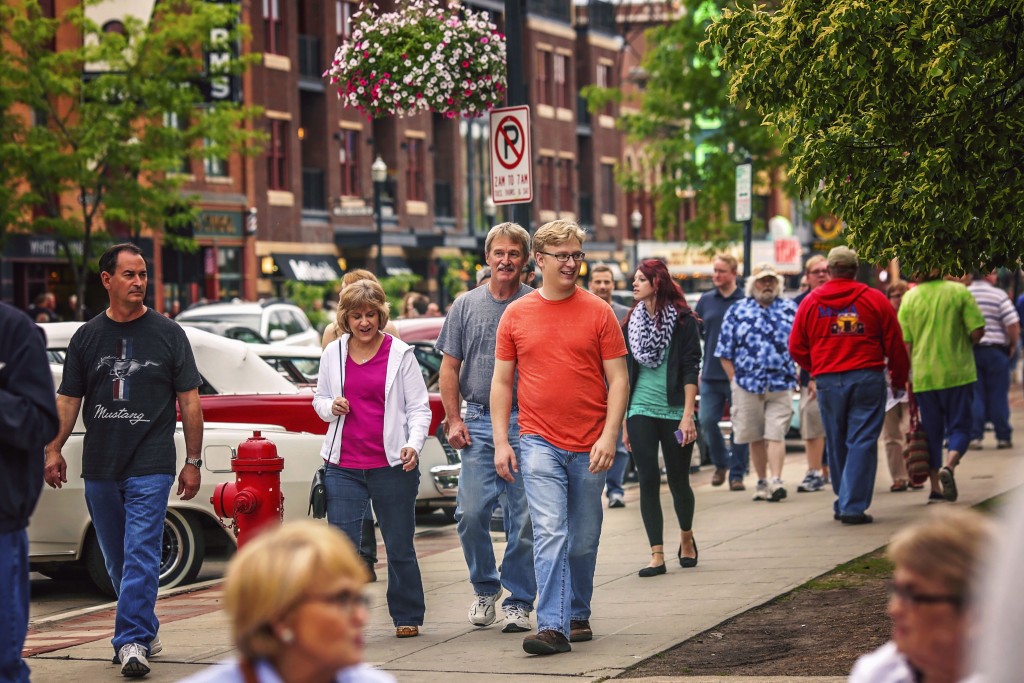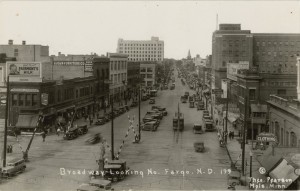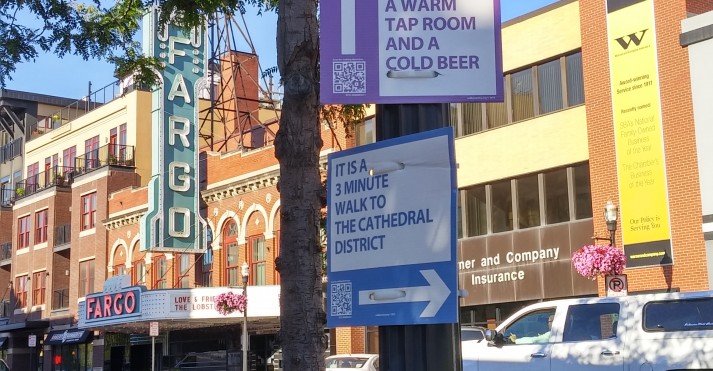
This article was originally published in the July 2016 issue of Fargo Inc! magazine
German philosopher Friedrich Nietzshe once said, All truly great thoughts are conceived by walking.
Kilbourne Group founder Doug Burgum grew up walking the streets of downtown Fargo with his mother, Katherine Kilbourne Burgum. He fondly remembers the bustling shoppers, his mother’s stories of the trolley cars, people on foot and on bikes… People had cars, too, but they were just one mode of many transportation options in daily life.
In the 1950s, federal highway funding put the pedal down on car-centric infrastructure. This shifted the design of our cities to prioritize cars, and it made most cities, including Fargo, nearly entirely dependent on automobiles.
Our relatively recent transformation from a walking culture to a driving one has not been good for our health. In fact, according to U.S. Surgeon General Dr. Vivek Murthy, one in two U.S. adults is living with a chronic disease, the risk of which is greatly reduced through physical activity. Walking and wheel-chair rolling are easy ways to increase your physical activity and can help you see your community in new ways. Murthy has issued a call to action to Step It Up by promoting walking and walkable communities in order to improve our health. Healthy cities begin with green space, walkable neighborhoods and appropriate mixed-use density.
As stated on surgeongeneral.gov: When everyday destinations are located too far away from home, walking will not be a convenient option. Compact, mixed-use, walkable development, like that in downtown Fargo, is good for the health of our community.
 So what does walkable mean? Walkable neighborhoods are safe, comfortable, and interesting. Narrow streets, trees and on-street parking are a few ways to slow traffic and make our neighborhoods more walkable. Walkability also has the essential element of being useful, meaning there has to be something meaningful to walk to. An added bonus: walkability drives value, for homes and for businesses. Every address has its own walkscore (WalkScore.com); higher walkscores translate to higher value.
So what does walkable mean? Walkable neighborhoods are safe, comfortable, and interesting. Narrow streets, trees and on-street parking are a few ways to slow traffic and make our neighborhoods more walkable. Walkability also has the essential element of being useful, meaning there has to be something meaningful to walk to. An added bonus: walkability drives value, for homes and for businesses. Every address has its own walkscore (WalkScore.com); higher walkscores translate to higher value.
Walkability often translates to bikeability as well. Fargo has added more than 40 miles of on-street bike lanes since 2010, with its first protected bike lane being installed along NP Avenue. Check out Great Rides Bike Share and experience Fargo from a bike this summer!
Fargo’s footprint has grown rapidly, with ever decreasing population density. Yet many in the city have recognized the efficiencies and walkability associated with a smaller footprint. There is plenty of room in city limits for adding mixed-use developments and appropriate urban-style density to keep Fargo growing in a positive way.
In 2012, Fargo city leaders and thousands of involved residents released the GO2030 Fargo Comprehensive Plan which prioritized walkability through initiatives such as mixed-use centers, infill, and active, living streets. The plan states: Fargo will support neighborhoods where residents can age in place, children can walk to school, and essential services are only a short walk away.
Kilbourne Group holds these priorities at the heart of each of our projects. From the filling in of empty parking lots with interesting, inviting architecture and storefronts, to the transformation of Roberts Alley into a pedestrian urban corridor lined with shops, art, entertainment, and culinary experiences, each project centers on how it will positively interact with pedestrians.
These principles don’t apply exclusively to downtowns. We can create walkable cores in neighborhoods all around the city. And that is healthy for all of us.
Enjoy downtown, vehicle-free, at StreetsAlive! Sundays July 10, August 28, and Setpember 25!